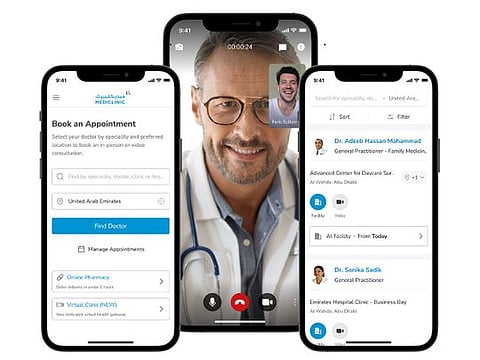Here’s how UAE hospital operators can get better results from telehealth
Healthcare providers need to work on a mindset change in their patients

The growth of telemedicine in the UAE has significantly transformed the landscape of healthcare, particularly during the pandemic. From being an ancillary facility, telemedicine soon became a lifeline, demonstrating its efficacy in establishing doctor-patient connections and maintaining continuity of medical care.
The focus must now shift to identifying ways to integrate telemedicine into long-term healthcare strategies, particularly in the management of chronic diseases.
Telemedicine is not a replacement
Whereas telemedicine was initially considered stopgap, its biggest asset is as a complement to standard healthcare. The pandemic taught us that online consultations are as effective as walk-in visits for many healthcare issues. What's crucial is that we identify specific areas where telemedicine can have a lasting impact, rather than try to substitute all human touch altogether. This necessitates a strategic response, one which ensures telehealth services address specific gaps in the health system.
Chronic disease management
Non-communicable diseases (NCDs) such as diabetes, hypertension, and obesity account for close to 60% of the world's healthcare spending. The UAE is faced with a growing chronic disease burden that requires continuous surveillance and prolonged care. By employing telemedicine for predictive health management, patients can be monitored at a distance through intelligent devices, thus reducing hospital attendance while simultaneously ensuring efficient control of the conditions.
This changeover also enhances patient results while reducing the workload on healthcare facilities.
Investment optimization
Rather than viewing the investment in telemedicine as a cost, it is a future cost-reducing mechanism. Early intervention, remote monitoring, and reduced hospital admissions are some of the reasons for significant savings in healthcare spending. There is evidence that the successful use of telemedicine for chronic disease management can prevent up to 40% of hospitalizations.
By transitioning the emphasis from reactive to proactive healthcare, the UAE can optimize the return on its telehealth investments, thereby ensuring enhanced patient care while simultaneously reducing overall costs.
Taking telemedicine beyond consultations
Although online consultations with doctors are the most prevalent application of telemedicine, its potential goes well beyond that of mere consultations. Telehealth platforms can enable the delivery of medicines, permit remote diagnostic tests, and facilitate mental health interventions.
Geriatric care and post-operative care are some of the specialized areas that can significantly be improved by the uptake of digital health technologies. Moreover, cross-border telemedicine consultations still connect the gap between local patients and foreign medical expertise, thereby cementing UAE’s status as a healthcare hub.
Adoption challenges
In spite of the benefits, the adoption of telemedicine in the UAE is relatively low, ranging from an estimated 10%-30%. One of the main reasons for this reluctance is the preference for face-to-face consultation and the lack of general awareness regarding the potential of telehealth.
To surmount this obstacle, healthcare providers must invest in educating patients about telemedicine services' convenience, efficacy, and safety.
Incentivizing and encouraging the use of telemedicine and by including it in national health policies could be some of the strategies which can be employed to increase adoption. Telemedicine presents a promising opportunity for enhanced accessibility, reduced costs, and improved patient outcomes.
By strategically incorporating digital solutions into conventional medical practice, the healthcare providers can establish a more efficient and patient-centered healthcare system.
Sign up for the Daily Briefing
Get the latest news and updates straight to your inbox




